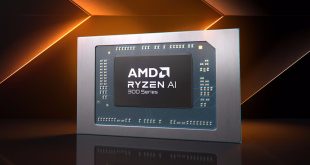Today we are using the MSI 890GXM-G65 motherboard with the latest V1.7 bios released a short while ago. We have read some negative reports about this board in recent months, with some instability issues mentioned – however in our testing since it was released our board has been extremely well behaved and a fantastic overclocking product.
It isn’t a particularly high end board either, costing only £100 inc vat in the UK. We achieved no better overclocking results with the Asus Crosshair IV Formula board we have in our labs.
Performance settings for this series of results at reference speeds were kept to the bios defaults.
MSI literature for the board is as follows:
World Leading Motherboard and Graphics manufacturer, MSI, launches their brand new 890GXM-G65 Motherboard using the AMD 890GX chipset to fulfil the increasing demand for the perfect home theatre PC. In addition to tailoring to the latest AMD Phenom II processors, the 890GXM-G65 provides full support for the DirectX 10.1 and UVD 2.0 Multimedia standards to significantly enhance High-Definition audio and video effects. Along with a wide variety of output interfaces, the 890GXM-G65 allows users to build a high quality HTPC combining both high performance and high stability
The 890GXM-G65 is not only a perfect HTPC motherboard, it also allows users to unlock the full potential of their CPU for maximum performance. By allowing users to unlock up to six cores the MSI 890GXM-G65 enhances performance and saves energy. unlocking addition cores on the CPU has become the hot topic of PC users lately and this board with integrated ATI Radeon HD 4290 Graphics redefines the first choice of a fully featured motherboard.
The 890GXM-G65 includes support for DirectX 10.1, ATI Hybrid Crossfire, ATI CrossfireX for installing two high performance ATI graphics cards, USB3.0 and native SATA-III (6Gbps) for maximum data transfer speeds.
Key Features
- AMD 890GX chipset based
- Supports USB 3.0 and SATA 3.0
- OC Genie Lite: Easy Overclocking Technology
- Superb Stability: Military Class Components
- Fully-equipped Digital Output Connectors: HDMI & DVI
- Lossless 24bit/192kHz HD Audio
- Highly-efficienct HeatPipe Thermal Design
Specifications
- Support for AMD Athlon II & Phenom II Processors
- HyperTransport 3.0 supporting speed up to 5200MT/s
- AMD 890GX and SB850 Chipset
- Integrated ATI Radeon HD4290 GPU
- 4x unbuffered DIMM DDR3 800/1066/1333/1600*/1800*/2133* (OC) DRAM, 16GB Max
- 2x PCI Express x16 slot (8x 8x in multi-GPU configuration)
- 1x PCI Express x1 slot
- 1x PCI slot, support 3.3V/ 5V PCI bus Interface
- One IDE port Supports Ultra DMA 66/100/133 mode
- 5x SATA III (6Gbps) support RAID 0, 1, 5, 10 mode
- 1x eSATA
- Flexible 8-channel HD audio with jack sensing
- Gigabit LAN
 KitGuru KitGuru.net – Tech News | Hardware News | Hardware Reviews | IOS | Mobile | Gaming | Graphics Cards
KitGuru KitGuru.net – Tech News | Hardware News | Hardware Reviews | IOS | Mobile | Gaming | Graphics Cards




These recent reviews seem to be all over the place tbh.
Would be a lot easier to compare and to read if you just collate all the 3.6, 4, 4.2, 4.3, 4.4 data into one set of graphs and compare it to the i5 and the 1055T to more easily understand the benefits if any of cranking up the voltage and how it compares and/or where it becomes faster than the other CPUs at what clock speed. And just leave the BIOS twinkering articles at the top of the article more
I think it works well. You get a baseline figure for other CPU’s then the performance for the CPU at the reference speed, then intructions for each clock speed setting and comparisions. Its more a guide style, I like them.
4 cores from AMD is pointless now, they need 6 or nothing.
I think its an interesting way of doing it as these processors are so boring and just clocked ramped versions of older ones. This processor in particular is a complete waste of time.
Interesting to see the performance compared to the 1055T with more cores. Has a real hard time keeping up with anything. Not the best idea, AMD need a new design completely, especially with the new Core processors released yesterday.
Cant see anyone wanting this, even AMD followers. 6 cores, it has to be.
I dont agree with pineappleexpress. I bought a 1100T and I found the overclocking performance guide very helpful. sometimes with a page and 20 items on it, it gets confusing. with that article I was able to say ‘I want 4ghz’ and I went to the page, copied the bios settings, after looking at the performance gains. Its unusual style, but I like it for some articles. especially for new models with the same architecture as before.
Well ive kinda gone back on my own theory… Its because normally i just go view all pages so im not clicking next page every minute or so, and in view all theres no page headers so you’re completely lost, just re-read it through and it seems a lot more clear in single page mode
On real usage, it’s pointless to overclock a phenom II without touching CPU_NB speed and only aiming for CPU clock. You should point CPU_NB to the 2.8-3.0GHz range if you want to maximize your overclock because it will starve on bandwidth very soon, specially at >800MHz for ram. The BE gives you an unlocked multiplier and free voltage tweaking just for the CPU_NB, not only the unlocked cpu multiplier, so it should also be used. You might not get such high CPU clock due to the added heat, but the performance gain is worth it, sometimes being greater than a 200-400MHz CPU overclock.
I just don’t get how in most most am3 overclocking reviews CPU_NB is forgotten.